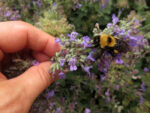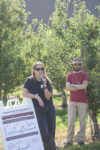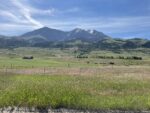Showing 51-60 of 445 results
 www.sare.org news farmer-led-research-identifies-plants-with-the-power-to-attract-pollinators
www.sare.org news farmer-led-research-identifies-plants-with-the-power-to-attract-pollinators Farmer-Led Research Identifies Plants With the Power to Attract Pollinators
Hardy plants that attract pollinators may be one practical method of boosting pollination and protecting yields.
 southern.sare.org news southern-sare-awards-young-scholar-enhancement-grants-for-2025
southern.sare.org news southern-sare-awards-young-scholar-enhancement-grants-for-2025 Southern SARE Awards Young Scholar Enhancement Grants for 2025
GRIFFIN, Georgia – The Southern Sustainable Agriculture Research and Education Grant program (SSARE) is giving young researchers an opportunity to learn more about sustainable agriculture. Through the James Harrison Hill, Sr. Young Scholar Enhancement Grant program, high school and undergraduate students are working alongside researchers on SSARE-funded projects, ranging from disease management to soil health […]
 southern.sare.org news through-field-trials-some-taro-varieties-suitable-for-the-southeast
southern.sare.org news through-field-trials-some-taro-varieties-suitable-for-the-southeast Through Field Trials, Some Taro Varieties Suitable for the Southeast
ASHEVILLE, North Carolina – Farmers across the Southeast are catching on to the production ease, culinary connections, and value-added diversity of taro – an ancient root crop that has been an integral part of the diet of civilization for thousands of years. With the right varieties, the tropical crop can be a viable, versatile, delicious, […]
 www.sare.org news new-video-plan-for-stressful-times
www.sare.org news new-video-plan-for-stressful-times New Video: Plan for Stressful Times
Starting or taking over a family farming operation is an inherently stressful enterprise. And failing to plan for the impact stress can have on mental health poses real risk for any small business. At Flat Rock Dairy in Paulding, Ohio, dairy farmer Gretl Schlatter and Ohio State University Extension educator Sarah Noggle are working to […]
 western.sare.org news light-it-up-using-uv-light-to-kill-powdery-mildew-in-grapes
western.sare.org news light-it-up-using-uv-light-to-kill-powdery-mildew-in-grapes Light it Up! Using UV Light to Kill Powdery Mildew in Grapes
Instead of relying solely on fungicides to control powdery mildew on winegrapes, growers may one day – and one day reasonably soon – have an effective non-chemical option: light. Specifically, light in the form of spore-killing ultraviolet UV-C radiation, delivered directly to the plant by a self-driving tractor moving through vineyard rows autonomously at night. […]
 western.sare.org news measuring-biochars-benefits-for-healthy-orchard-soils
western.sare.org news measuring-biochars-benefits-for-healthy-orchard-soils Measuring Biochar’s Benefits for Healthy Orchard Soils
As the California agricultural community seeks new tools and practices critical for adapting to a changing climate, the American Farmland Trust partnered with a Madera County almond grower, conservation districts, and the University of California at Merced to conduct a field demonstration project and experiment on the application of biochar and its effects on soil […]
 western.sare.org news breaking-the-barriers-to-ipm-adoption-in-wenatchee-pears
western.sare.org news breaking-the-barriers-to-ipm-adoption-in-wenatchee-pears Breaking the Barriers to IPM Adoption in Wenatchee Pears
For all the promise, potential and profound benefits integrated pest management can bring, there’s also this harsh reality: IPM only works if people practice it. In some pear-growing regions in the Pacific Northwest, IPM is a widely accepted, effective and economical way to manage pear psylla and codling moth, the crop’s key insect pests. But […]
 western.sare.org news a-new-tool-for-managing-invasive-grasses-in-montana
western.sare.org news a-new-tool-for-managing-invasive-grasses-in-montana A New Tool for Managing Invasive Grasses in Montana
Invasive annual grasses, such as cheatgrass and ventenata, are reducing the abundance of native grasses that livestock producers depend on in the semi-arid rangelands of southwestern Montana. At the current low-to-moderate levels of invasion, it’s crucial to begin targeted management before invasive populations become too advanced. To guide efforts to slow or halt annual grass […]
 western.sare.org news impacts-of-compost-application-on-the-drought-resiliency-of-rangeland
western.sare.org news impacts-of-compost-application-on-the-drought-resiliency-of-rangeland Impacts of Compost Application on the Drought Resiliency of Rangeland
Severe droughts, expected to increase due to climate change, pose threats to California’s rangelands. Ranchers and rangeland managers are facing decreased livestock forage production, reduced biodiversity, and soil degradation. A previously funded Western SARE project (grant number OW19-349) found that compost amendments provide benefits to soils and forage productivity, including greater resilience to drought. However, […]
 western.sare.org news propagating-tea-plants-for-the-west
western.sare.org news propagating-tea-plants-for-the-west Propagating Tea Plants for the West
Tea is one of the most popular drinks in the world, second only to water in consumption. In America, you can find it in more than 80 percent of households. Finding it growing in U.S. soil is another story. Tea is produced on less than 100 acres in America, mostly in Hawaii and the South. […]